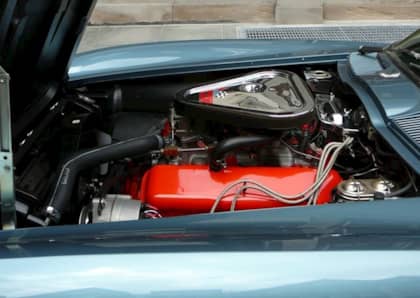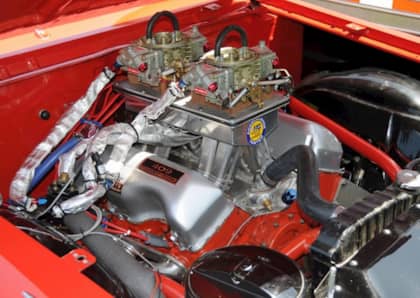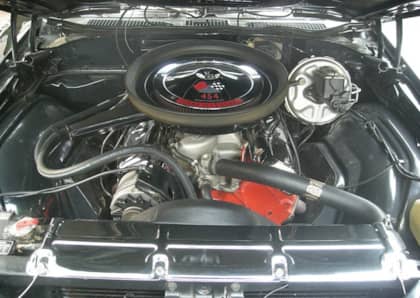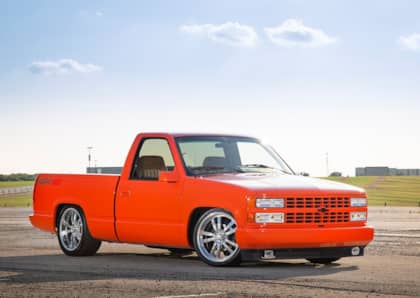The 396ci Big Block V8 Was A Game-Changer For Chevrolet Muscle Cars
General Motors made some unusual decisions at the height of the muscle car era, one of which was a near-universal ban on engine sizes above 400 cubic inches for anything other than its full-size models. Although the flagship Corvette was immune from the General's somewhat extreme reaction to concerns that federal regulators might intervene in the horsepower wars (amid its own antitrust concerns and overall withdrawal from motorsports) the company's engineers did their best to circumvent the rules and squeeze as much performance out of as many vehicles as possible.

This was in large part the genesis of Chevrolet's Mark IV big block engine. With an initial displacement of 396 cubic inches, the motor snuck in just under GM's restrictive corporate policies, but more importantly it managed to beg, borrow, and steal from the secret racing programs still underway in far-flung corners of organization.

For six glorious model years the 396 twisted and turned its way through the golden age of Detroit performance, burning acres of rubber on drag strips and city streets and leaving a trail of legendary muscle machines in its path.
Hot Right Out Of The Gate
The Mark IV 396 learned many lessons from the W series big blocks (348, 409, 427) that came before it, as well as the 'Mystery Engine' that had been developed to race at Daytona, and the abandoned Corvette Le Mans program. These race-tested motors had been popular in both NASCAR and drag racing, and while the 396 was not a direct continuation in terms of design it featured the same flat tappet camshaft, two-piece main seal, and the same bore spacing as the W motor (4.840 inches, used for all subsequent Chevrolet big blocks).

When it appeared in 1965, the 396 upgraded to 7/16 inch connecting rod bolts and a larger main journal, and it also featured rectangular port heads, a solid lifter cam, an aluminum intake manifold, four-bolt main caps, and a forged crankshaft. Dubbed the L78, the motor's 11:1 compression ratio was a hallmark of the times, and it was initially offered in the Corvette and full-size models like the Impala, Bel Air, and Biscayne. Officially, the engine made 425hp and 415 lb-ft of torque.

There was also a version of the 396 dubbed the L37 offered in the Chevelle that same year as the Z16 option. It was an identical motor save for a different camshaft and exhaust manifolds, but its horsepower rating was dropped to 375 thanks to sleight of hand at Chevrolet that measured the L78's output at 6,400 rpm but the L37's at 5,600 rpm (to protect the flagship Corvette from being outshone by the more affordable Chevelle).

This unusual approach continued the following year. Although the L78 disappeared from both Corvette and full-size order sheets and migrated over to the Chevelle and El Camino side of the showroom, power continued to be rated at the lower RPM. The same was true when the L78 eventually found its way into the Camaro in 1967. The L78 was also offered in the smaller Nova and Chevy II cars starting in 1968, with the final engines being produced for the 1969 model year.

Alongside the L78 were a number of other versions of the 396 cubic inch big block, such as the single-year, two-barrel L66 (265hp), and the four-barrel L34 (360hp) and L35 (325hp).

402, But Still 396
Things get a little cloudy for the 396 starting in 1970, when Chevrolet decided to bore out the block to 402 cubic inches. Normally, this change would have been reflected on the order sheet, but rather than market the big block as a 402 cubic inch engine, instead it continued to use the 396 name for models like the Nova, Camaro and the Chevelle. In full-size cars it was branded the 'Turbo-Jet 400,' but only when the engine was ordered under the hood of a truck were its true 402 colors advertised.

There were three versions of the 396/402 produced. The LS3 that debuted in 1970 provided 330hp, followed by a 300hp model in 1971. By 1972, the final year for 402 production, the engine had seen its output drop to 240 horses (or 210 without a dual exhaust), largely as a result of the shift from gross to SAE net ratings. The LS3 and the L35 were very similar, with two-bolt main caps and a 10.25:1 compression ratio.

The L34 continued for a single year and provided 350hp, while the L78 was also bored out to 402 cubic inches and maintained its customary 375hp. Both were off the order sheet by the end of 1970.

The 396 exists largely in the shadow of the 427 and 454 cubic inch motors that followed it, despite sharing many commonalities in terms of parts, design, and performance potential.

With so many more 396 big blocks available on the market, building this motor is substantially less expensive than cranking more power out of the rare 454, and it's possible to see similarly impressive results despite the displacement disadvantage.











